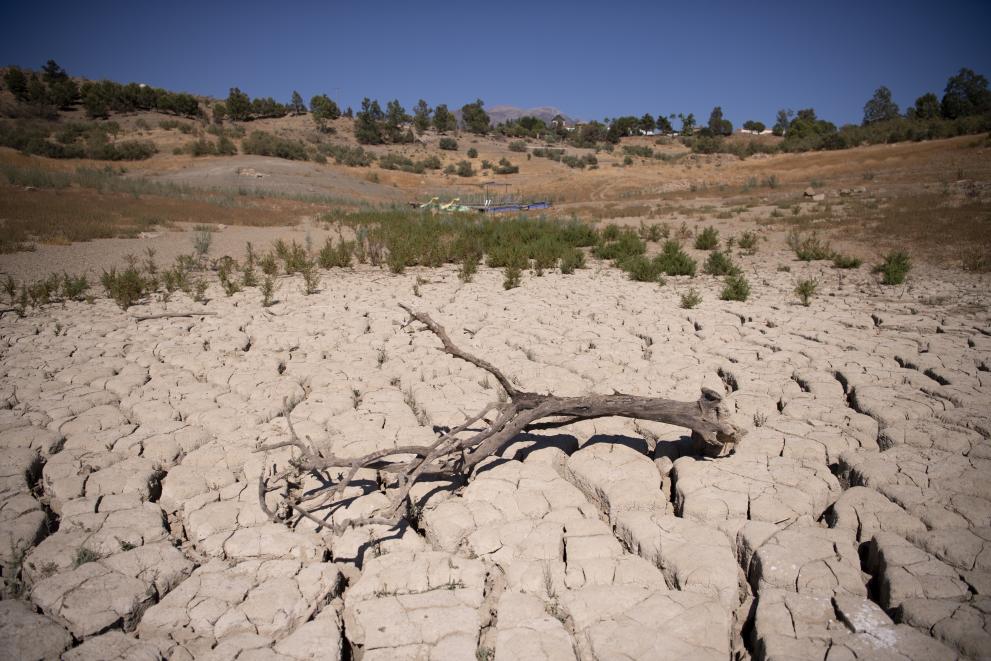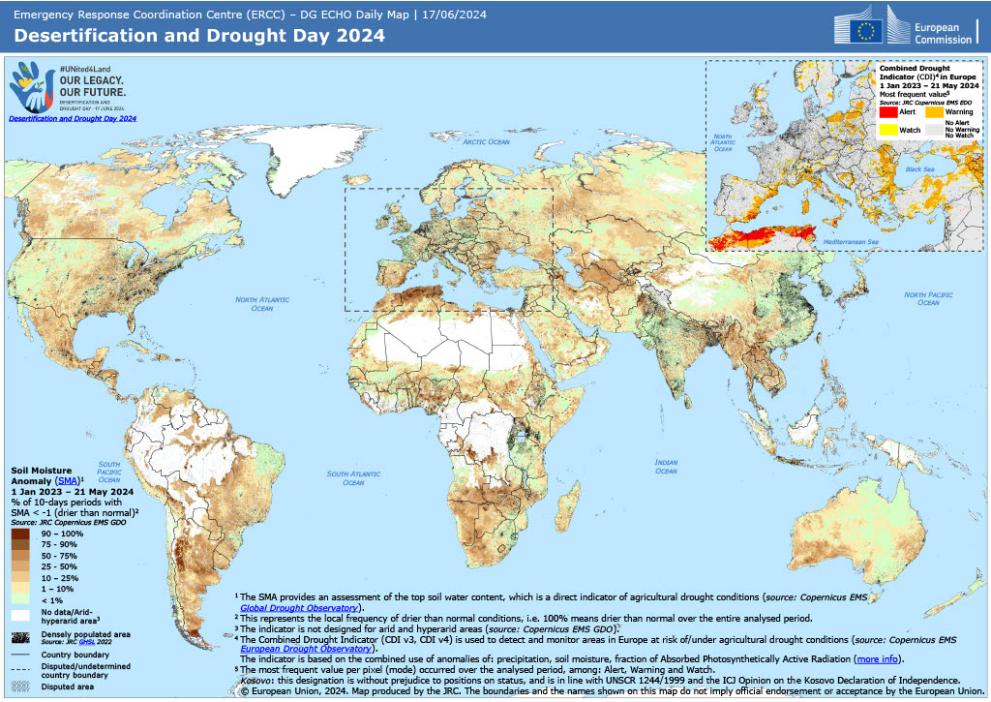
World Day to Combat Desertification and Drought: Enhancing Resilience
The World Day to Combat Desertification and Drought, on 17 June, highlights the need to address desertification, land degradation, and drought.
Addressing One of the Most Pressing Environmental Challenges
The World Day to Combat Desertification and Drought, on June 17, serves as a significant annual reminder of the urgent need to address desertification, land degradation, and drought - some of the most pressing environmental issues of our time. These challenges are increasingly problematic in Europe too, with droughts and water scarcity posing substantial risks to the continent. Climate change is exacerbating these hazards, affecting both the frequency and severity of droughts. The changes in precipitation patterns and rising temperatures significantly strain the quality and quantity of freshwater resources, which are crucial for economic development, human health, and ecosystems.

The European Green Deal and Water Management Initiatives
The European Green Deal, along with various initiatives, offers a comprehensive framework for addressing these challenges. It promotes ambitious water quantity management strategies and enhances awareness and application of new water legislation. The adoption of the EU Strategy on Adaptation to Climate Change in 2021 reflects this commitment.
As part of this strategy, the European Commission, through the Directorate-General for Environment and the Joint Research Centre, launched the European Drought Observatory for Resilience and Adaptation (EDORA) project. EDORA, now known as the European and Global Drought Observatories, aims to bolster drought resilience and adaptation across the EU.
Recent Developments in Drought Monitoring and Management
Two years ago on June 16-17, 2022, the kick-off meeting for the Network of Drought Observatories in the EU marked a significant milestone. This meeting provided a comprehensive overview of the state-of-the-art drought observatories in the EU from both scientific/technical and operational perspectives.
The European Drought Observatory (EDO) and the Global Drought Observatory (GDO), integral components of the Copernicus Emergency Management Service, play a vital role in delivering drought-relevant information and early warnings within Europe and globally. These observatories provide up-to-date maps and data accessible on various devices, including tablets, smartphones, and desktop computers, enhancing the usability and reach of critical drought information.
For instance, JRC is developing impact-based drought risk assessments. The approach employed combines expert knowledge and machine learning techniques to assess the risks for various sectors and systems within the EU under current conditions and projected climate scenarios of +1.5°C, +2°C, and +3°C as compared to the pre-industrial period. The assessment focuses on five sectors and systems: agricultural crop systems, public water supply, energy production, river transportation, and ecosystems.
Prolonged Drought and Record Temperatures in the Mediterranean
Severe and prolonged droughts have affected Europe for over two years and northern Africa for six years, causing significant water shortages and hampering vegetation growth. According to a recent report by the Commission’s Joint Research Centre (JRC), the Mediterranean region has experienced long-lasting above-average temperatures, warm spells, and poor precipitation. This has led to severe drought conditions across southern Italy, southern Spain, Malta, Morocco, Algeria, and Tunisia, with critical impacts on agriculture, ecosystems, drinking water availability, and energy production.
The report underscores the importance of climate mitigation and adaptation measures for water management and sectors dependent on freshwater. It highlights that every tenth of a degree of global warming increases the risk of prolonged droughts, necessitating investments in early warning systems, water-efficient technologies, drought-resistant crops, and improved access to water resources. JRC and EDORA partners have developed the first European Drought Risk Atlas, utilising innovative technologies to assess drought risk and enhance community preparedness and resilience.

Sectors
Risk drivers